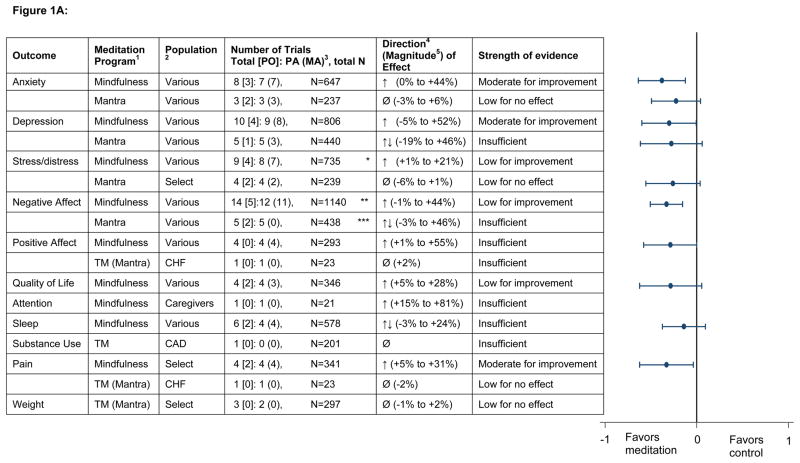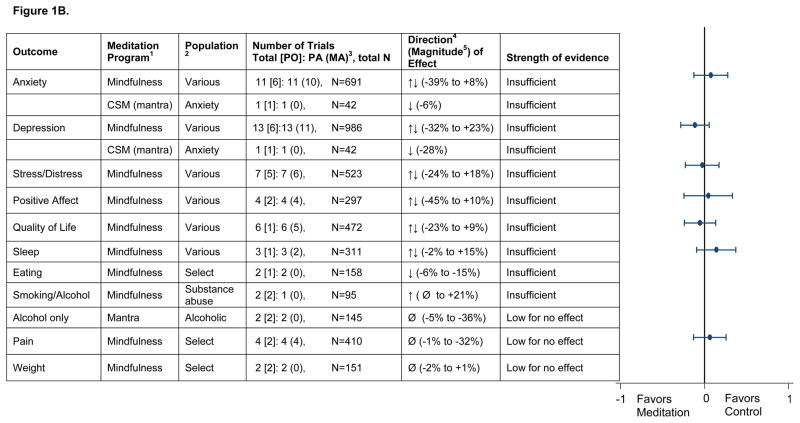Figure 1.
Figure 1A: Summary across measurement domains of comparisons of meditation programs with non-specific active controls
Figure 1B. Summary across measurement domains of comparisons of meditation programs with specific active controls
- CSM = Clinically Standardized Meditation, a mantra meditation program; TM=Transcendental Meditation, a mantra meditation program
- CHF = Congestive Heart Failure; CAD = Coronary Artery Disease
- PO = Number of trials in which this was a primary outcome for the trial; PA = Primary Analysis; MA = Meta-analysis; N = sample size
-
Direction based on relative difference in change analysis:↑ indicates that the meditation group improved relative to the control group (with a relative difference generally greater than or equal to 5 percent across trials).↓ indicates the meditation group worsened relative to the control group (with a relative difference generally greater than or equal to 5 percent across trials).Ø indicates a null effect (with a relative difference generally less than 5 percent across trials).↑↓ indicates inconsistent findings (some trials reported improvement with meditation [relative to control] while others showed no improvement or improvement in the control group [relative to meditation]).
- Magnitude based on relative difference in the change score: This is a relative percent difference, using the baseline mean in the meditation group as the denominator. For example, if the meditation group improves from a 10 to 19 on a mental health scale and the control group improves from 11 to 16 on the same scale, the relative difference between groups in the change score is: (((19-10)-(16-11))/10)x100=40%. The interpretation is that there is a 40% relative improvement on the mental health scale in the meditation group compared with the control group. Improvement in all scales is indicated in the positive direction. A positive relative percent difference means that the score improved more in the intervention group than in the control group
Meta-analysis figure on far right shows Cohen’s d with the 95% CI
* Summary effect size not shown due to concern for publication bias for this outcome
**Negative affect combines the outcomes of anxiety, depression, stress/distress, and is thus duplicative of those outcomes
*** We did not perform meta-analysis on this outcome since it would duplicate the anxiety meta-analysis for mantra. Anxiety and depression are indirect measures of negative affect, and therefore resulted in a lower strength of evidence than for the outcome of mantra on anxiety.


